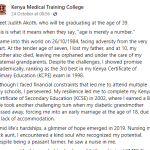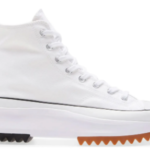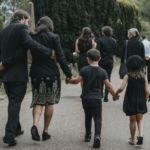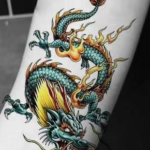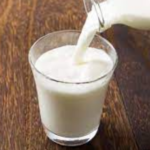
Nose bleeding can be spontaneous or the result of some trauma. Be that as it may, you should have some basics on how to manage the condition if and when it arises. Here are some quick first aid tips for nosebleeds for you.
What’s a nosebleed?
Nosebleeds, also called epistaxis, refers to the loss of blood from the inner lining of the nose. The condition is very commonplace. In fact, it is estimated that close to 65% of the people worldwide will experience at least an episode of epistaxis in their lifetime.
The cause of nosebleeds is attributed to the anatomical location of the nose in the middle of the face and the high concentration and closeness of blood vessels to the inner membrane lining of the nose.
Quick Read: Best anti-aging supplements
Procedure for Nosebleed First Aid
Care for spontaneous & nosebleeds due to a light hit on the face
In the event of a nosebleed, whether spontaneous or caused by trauma, the following self-care first aid measures are recommended:
1. Sit Upright and lean forward
The first step in first aid care for nosebleeds is sitting upright and leaning forward. This applies for self-care or if you’re offering care to someone else.
Quick Read: Male performance enhancement pills
2. Breath through the mouth
The person suffering the nosebleed should breath through their mouth and not the nose.
3. Pinch your nose
With the posture and exhalation set, go ahead and pinch the nose continuously for close to 15 minutes. The idea is to apply pressure till a clot forms and bleeding stops.
4. Release the pinch to see if the bleeding stopped
After 15 minutes of continuous pinching of the nose, release the pressure and check if nose bleeding has resolved. If not, get back into position and repeat the above mentioned steps. If the bleeding doesn’t stop even after a repeat procedure, consider seeing your doctor.
Quick Read: Beauty tips for teenage girls
First Aid for Nosebleeds due to an Object Lodged in the Nose
Sometime the nosebleed is due to an object lodged in the nose e.g. a nose ring, an insect or pebble. Follow these steps to stop the bleeding:
i. Know what’s lodged in the nose
The first step toward stopping nosebleeds due to an object lodged in the nose is to remove the object. This might be easier for object attached from the outside of the nose such as a nose ring. However, it can be a little complicated for a pebble or insect. For this latter category of objects, proceed to the next step.
ii. Which nostril is affected?
Establish which side of the nose has the object in question.
iii. Block the other nostril
After establishing the affected nostril, seal off the other one with a finger.
iv. Blow hard through the other nostril
With one nostril closed, blow hard through the other nose. Remember to breath through the mouth throughout this operation.
Quick Read: Rapid weight loss tips
Don’t stick anything inside the nose
Do not be tempted to remove the object lodged inside the nose by sticking something like a pin. Doing so risk aggravating the nosebleed.
Did you know….?
For nosebleeds resulting from traumas, like in the case of an object lodged inside the nose, inducing sneezing (by sniffing pepper) can be of much help dislodging the offending object from the nose.
First Aid for Nosebleeds due to Broken nose
Broken nose may result from an accidental fall of hard hit to the face. Either way, here are some life saving care tips to undertake while awaiting medical attention.
i. Sit Upright and lean forward
This is important in helping keep blood from going down the back of the throat.
Quick Read: How to prevent hair loss due to alopecia
ii. Breath through the mouth
This is important in enhancing clot formation which then stops the bleeding.
iii. Apply cold press on the nose
This will not only relieves the pain, but also facilitates blood clotting which is necessary to stop the bleeding.
iv. Call your doctor
If the bleeding still continues, call your doctor. Remember a broken nose is an emergency that needs specialized medical attention.
Pro Tip!!
Never attempt to straighten a broken nose. That can and should only be done by a doctor.
How to Avoid Nosebleeds
It’s possible to avoid spontaneous nosebleeds, especially after suffering an episode. Here are some useful tips to follow:
- Minimize or avoid physical activity all together for at least a day.
- avoid picking or touching your nose for at least a day.
- Do not take hot drinks, alcohol in any of its forms, cigarette, or even use aspirin for at least a week after a nosebleed episode.
- Keep the head elevated using a pillow while lying down.
- Get used to breathing from the mouth rather than nose.
- During summer, use room humidifiers whenever possible.
Quick Read: Best Anti-Dandruff Oils for Men & Women
Common Causes of Nosebleeds
Nosebleeds are associated with a number of factors. Here are some common causes of nosebleeds:
- Upper respiratory infections such as colds, sinusitis, etc.
- Nose picking
- Insertion or accidental entry of objects into the nose.
- A punch or hit to the nose or face
- Allergic/ non-allergic rhinitis.
- blood thinning medications such as aspirin, NSAIDs
- High altitude (thin and dry air)
- Frequent use of antihistamines and nasal decongestants
Quick Read: Rheumatoid Arthritis – Symptoms and Treatment
Less Common Causes of Nosebleeds
Apart from the common causes, there are some less common causes of nosebleeds. Some of these include:
- Bleeding disorders e.g. Hemophilia, Von Willebrand disease, Leukemia, etc.
- Hypertension
- Artherosclerosis
- Surgery of the face or nose
- Thrombocytopenia
- Pregnancy
That’s it for first aid for nosebleeds. Remember to always talk to your doctor if the bleeding problem doesn’t seem to go away despite your the first aid.


